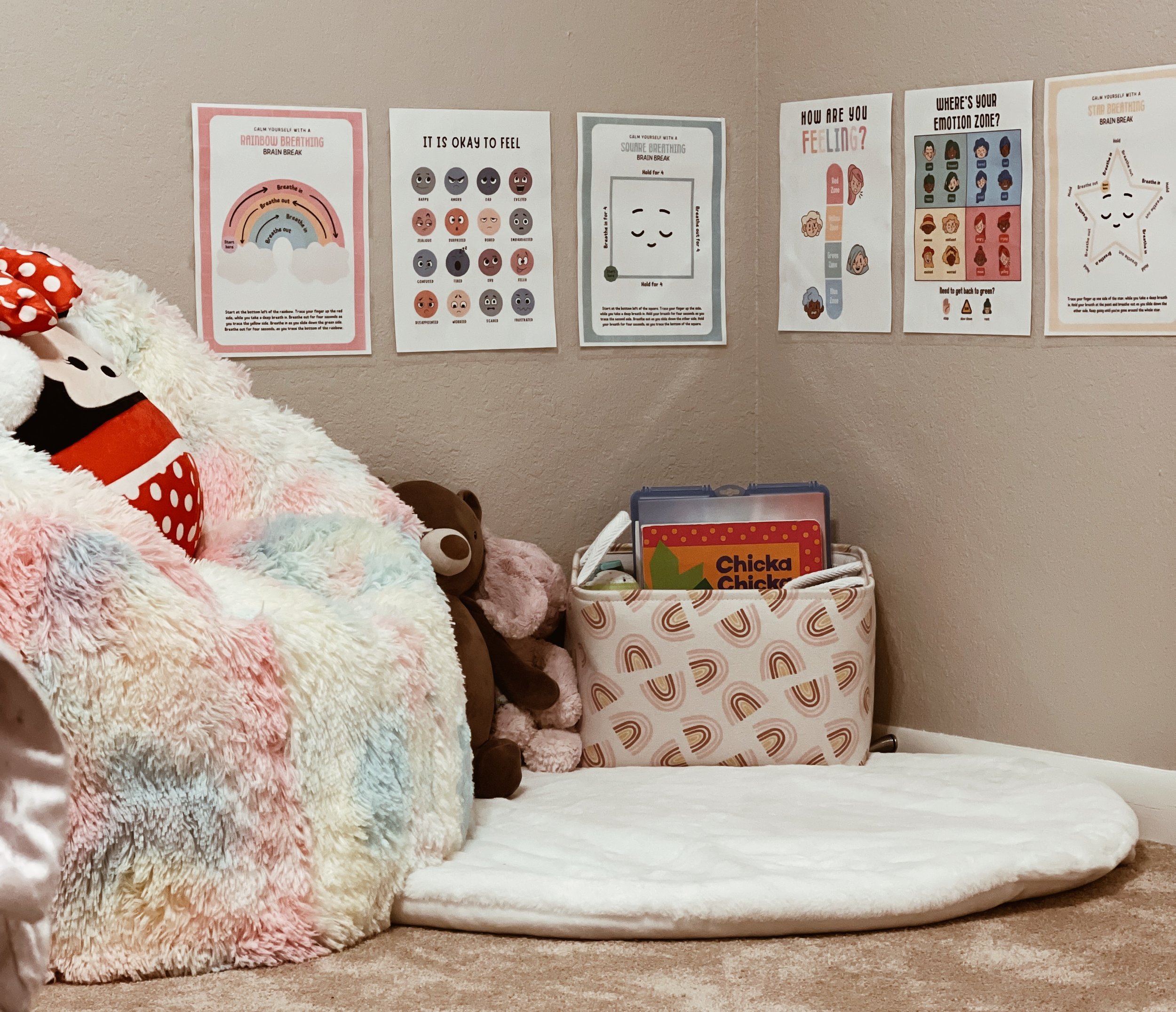Give the Gift of Calm- Creating a Calming Corner
WRITTEN BY Kristin Tallackson, M.S., LPC
HFC Lead Therapist
Being able to calm oneself is a learned skill. As caregivers, we may forget that the ability to regulate is a skill that is modeled and taught. Just as we teach our children to count, read, and tie their shoes, we must also teach them the skills to self-regulate. We all have different ways of regulating when our emotions run over. Maybe it’s a walk through the park, a few deep breaths, or smelling your favorite lotion as you put it on. Providing a safe space for your child to experience their big emotions is a great way to create an environment where they can learn to self-regulate.
One way to create a space for your child is to designate an area you can call a “calming corner”. This space usually includes soothing objects that can help them practice mindfulness and reflection. You can think of a calming corner as a safe space for your child to experience the fullness of their emotions while you are there (co-regulation). As they grow (and it is developmentally appropriate), they will be able to implement their learned coping skills and self-regulate.
Creating a calming corner starts with finding a designated corner or area in a quiet room. The area does not have to take up much space and can be created with items you already have at home. When thinking of what to add to the corner, think of what is regulating for your child. Each calming corner is uniquely tailored.
What to add:
- A soft rug or bean bag chair. Comfortable pillows or soft blanket.
- Books about emotions. Some of my personal favorites are The Color Monster; The way I feel; and In my Heart: A book of Feelings.
- If your child particularly finds reading soothing, you can add books that teach coping skills, such as Alphabreaths.
- Perhaps your child has a favorite stuffed animal, doll, toy or blanket.
- Think about a sensory input items such as play-doh, fidgets, thinking putty, lotion, or koosh balls.
- Many choose to put handouts on the wall with putty. There are handouts you can purchase on Etsy. You can also search google for free copies. The pages typically provide reminders of many coping skills the child may use to regulate.
- If you have a child that is inclined to creative outlets, having coloring books, a journal, or forms of artistic expression is helpful. For caregivers of littles, I would suggest the color wonder markers. They are mess free markers that only write on paper.
- Music can often be a soothing input. Perhaps it’s their favorite Daniel Tiger song, white noise, or the newest pop song.
I’ll leave you with a quote from Dr. Siegel, author of The Whole-Brain Child and The Yes Brain,
“Having kids reflect on and talk about their emotions, what we are calling a time-in, has been demonstrated in a wide range of studies to support the important development of emotional understanding. We encourage parents to comfort and soothe and connect with their children during times of distress, and to reflect afterward on their inner experience with reflective dialogue, rather than punitively isolating them in a moment of anger and without any opportunity for reflection and connection.”
Below are links to common items:
- Crazy Aarons Thinking Putty- Mixed Emotions
- The Color Monster- Pop Up Book
- Alphabreaths: The ABC's of Mindful breathing
If your child is struggling to manage big emotions, child counseling can help. Reach out today to set up an appointment.
Image source: Photo by TijanaM/shutterstock
